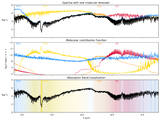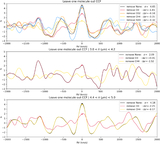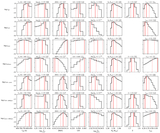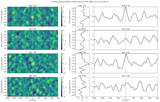Image Details
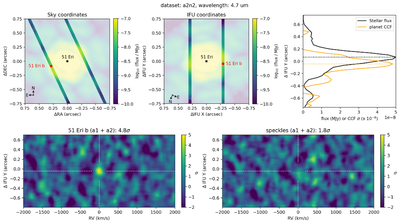
Caption: Figure 2.
Detection of the planet 51 Eridani b from moderate resolution spectroscopic observations with JWST/NIRSpec. Top: visualization of the point cloud in sky coordinates (left) and IFU-aligned coordinates (center). In the background at half opacity is the best-fit synthetic WebbPSF from the coordinate correction/centroiding step. In the foreground at full opacity is an interpolation of the continuum-preserving point cloud for the combined planet- and speckle-side observations. The “slit” appears ∼0﹩\mathop{.}\limits^{\unicode{x02033}}﹩05 wide in this figure because that is the scale subtended by the subpixel dither pattern, not the full 0﹩\mathop{.}\limits^{\unicode{x02033}}﹩2 width of the physical slit aperture. (Right) A demonstration of the offset in IFU Y between the peak intensity of the stellar PSF and the location of the peak of the cross-correlation function, indicating the signal is not a result of amplified stellar noise. Bottom: cross-correlation based detection maps in the IFU Y and planetary radial velocity phase space. (Left) Joint detection map for all planet-side data sets, (right) joint detection map for all speckle-side data sets. The white dashed lines indicate the expected position and velocity of the target.
Copyright and Terms & Conditions
© 2025. The Author(s). Published by the American Astronomical Society.



